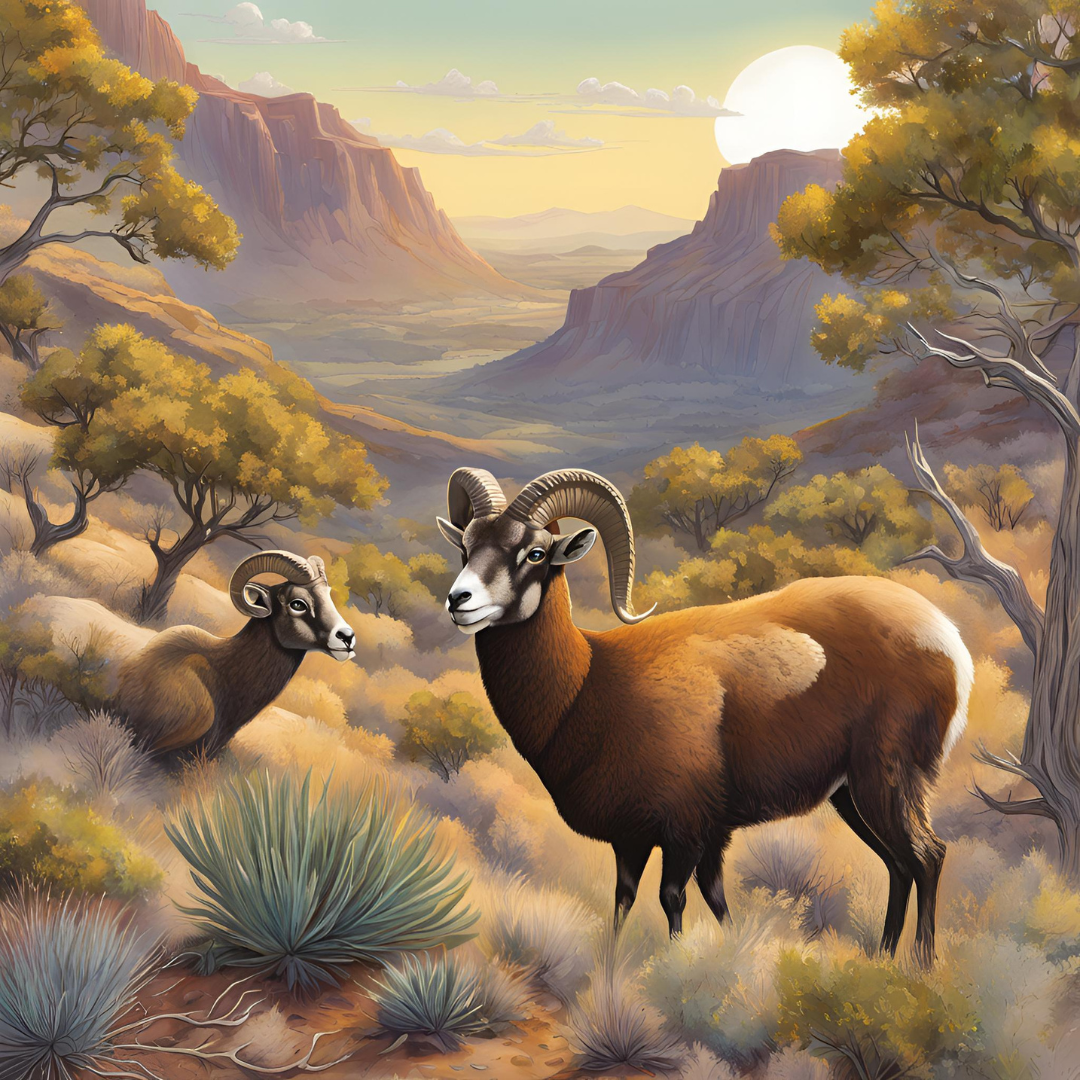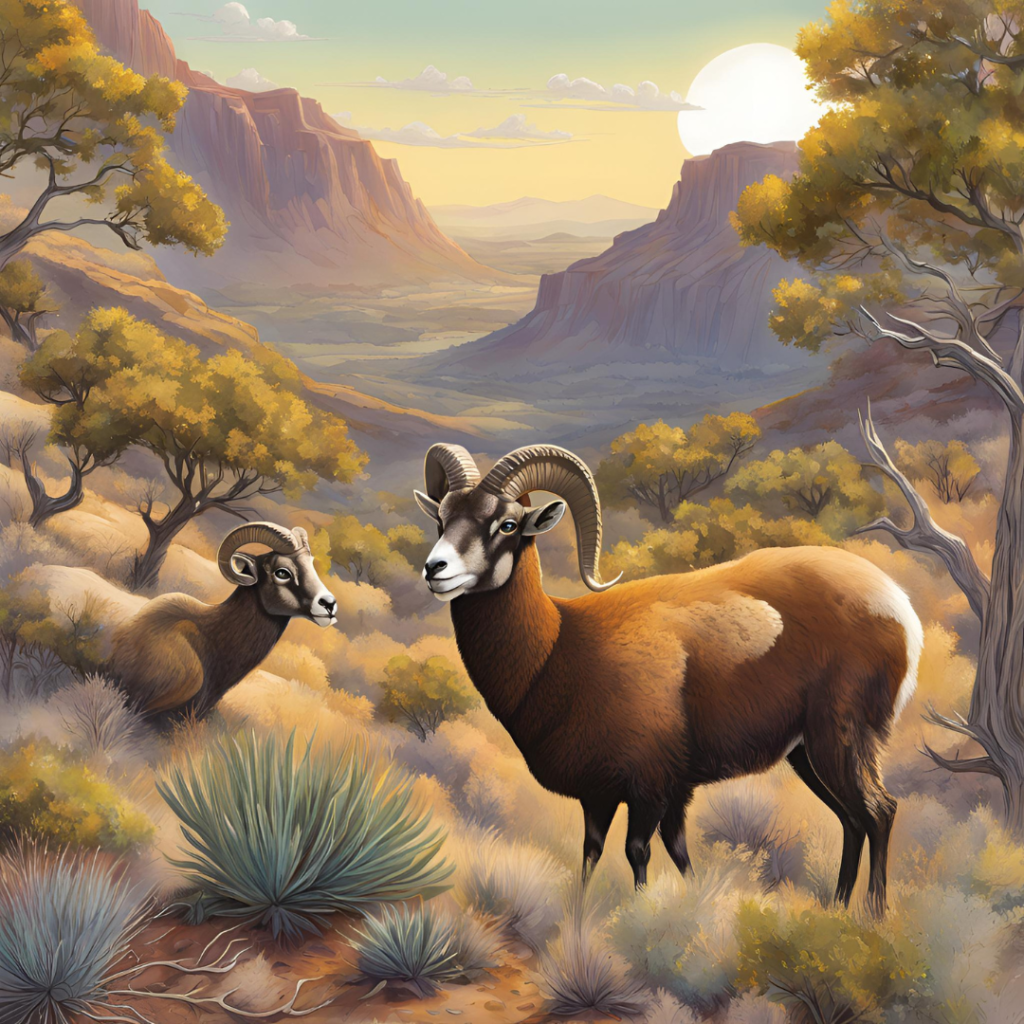

Table of Contents
Nature is a masterpiece of adaptation and survival. The chaparral biome stands out for its resilience and unique features among its diverse ecosystems. The mouflon, a hardy wild sheep species living in this challenging environment, has developed remarkable adaptations. Let’s dive into the fascinating relationship between the chaparral biome and mouflon survival.
Overview of the Chaparral Biome
Geographic Distribution
The chaparral biome primarily exists in regions with a Mediterranean climate. These include parts of California, Chile, South Africa, Australia, and the Mediterranean Basin. Each region boasts distinct plant and animal life.
Key Characteristics
Known for its hot, dry summers and mild, wet winters, the chaparral is a challenging environment to thrive. The biome is characterized by dense shrubs, drought-resistant plants, and periodic wildfires, essential in maintaining its ecological balance.
Introduction to Mouflon
History and Origin
The mouflon is believed to be one of the ancestors of modern domestic sheep. Initially found in regions such as the Middle East and southern Europe, mouflons have since expanded to various habitats, including the chaparral biome.
Where Mouflons Are Found Today
Today, mouflons are found in parts of Europe, the Mediterranean, and some chaparral regions where their adaptability shines.
The Unique Features of the Chaparral Biome
Climate and Weather Patterns
Dry Summers and Mild Winters
The chaparral’s climate is demanding. Animals and plants here must endure months of scorching heat followed by cooler, rainy winters.
Importance of Fire in the Ecosystem
Wildfires may seem destructive but are crucial for the chaparral’s health. Many plants depend on fire to regenerate, and animals like the mouflon adapt to these periodic disruptions.
Vegetation in the Chaparral
Drought-Resistant Plants
The chaparral is home to plants like sagebrush, manzanita, and yucca, which thrive despite limited water and serve as vital food sources for animals.
Role of Shrubs and Trees
Thick shrubs and scattered trees provide shelter and sustenance, helping the mouflon and other species survive.
Mouflon Adaptations for Survival
Physical Adaptations
Coat Texture and Seasonal Changes
Mouflons have a thick coat that changes with the seasons. It keeps them cool in summer and warm during winter, an essential trait for surviving the chaparral’s fluctuating climate.
Horn Shape and Purpose
Mouflons are known for their curved horns, which are not only a symbol of dominance but also a tool for defence and competing during mating season.
Behavioural Adaptations
Grazing and Foraging Techniques
Mouflons are skilled grazers, feeding on thorny shrubs and grasses abundant in the chaparral. They can efficiently extract nutrients from their diet.
Avoiding Predators
Living in open terrain, mouflons rely on keen eyesight and swift movement to escape predators like coyotes and mountain lions.
Reproductive Strategies
Breeding Seasons in the Chaparral
Mouflons breed in cooler months when resources are more abundant. This timing ensures better survival chances for their offspring.
Caring for Offspring
Ewes (female mouflons) are protective mothers who ensure their lambs are well-fed and sheltered in the early stages of life.
How the Chaparral Biome Shapes Mouflon Survival
Coexistence with Native Fauna
Competition for Resources
Mouflons often compete with other herbivores for their limited vegetation, making their dietary flexibility a key to survival.
Predators in the Biome
Predators like bobcats and golden eagles add another layer of challenge, keeping the mouflon population in check.
Interactions with the Vegetation
Dietary Adaptations
Mouflons can digest tough, fibrous plants, allowing them to thrive where other grazers might struggle.
Role in Seed Dispersal
As they graze, mouflons inadvertently help with seed dispersal, thereby regenerating the chaparral’s plant life.
Threats to the Chaparral Biome and Mouflon
Environmental Challenges
Climate Change Impact
Rising temperatures and unpredictable weather patterns threaten the delicate balance of the chaparral biome.
Habitat Destruction
Urban development and agriculture encroach on chaparral habitats, leaving species like the mouflon vulnerable.
Conservation Efforts
Protecting the Chaparral
Efforts are underway to preserve chaparral ecosystems through fire management and habitat restoration.
Strategies for Mouflon Conservation
Captive breeding programs and habitat protection initiatives are helping maintain stable mouflon populations.
Conclusion
The chaparral biome is a testament to nature’s resilience, and the mouflon is a prime example of adaptation at its finest. From withstanding harsh climates to coexisting with other species, mouflons thrive in this demanding environment. However, their survival depends on our efforts to protect the chaparral biome and address its challenges.
FAQs
- What makes the chaparral biome unique?
- Its Mediterranean climate, drought-resistant vegetation, and reliance on fire for regeneration make the chaparral biome stand out.
- How do mouflons adapt to the chaparral environment?
- They have physical and behavioural adaptations like seasonal coat changes, efficient grazing, and keen predator avoidance skills.
- Why is fire necessary in the chaparral biome?
- Fire clears out old vegetation, allows new growth, and maintains the ecosystem’s balance.
- What threats do mouflons face in the wild?
- Habitat destruction, climate change, and predation are significant threats to mouflon populations.
- How can we contribute to conserving the chaparral biome?
- Supporting conservation initiatives, reducing urban sprawl, and spreading awareness about the biome’s importance are critical steps.
https://americanexponent.com/news
https://americanexponent.com/tech/




